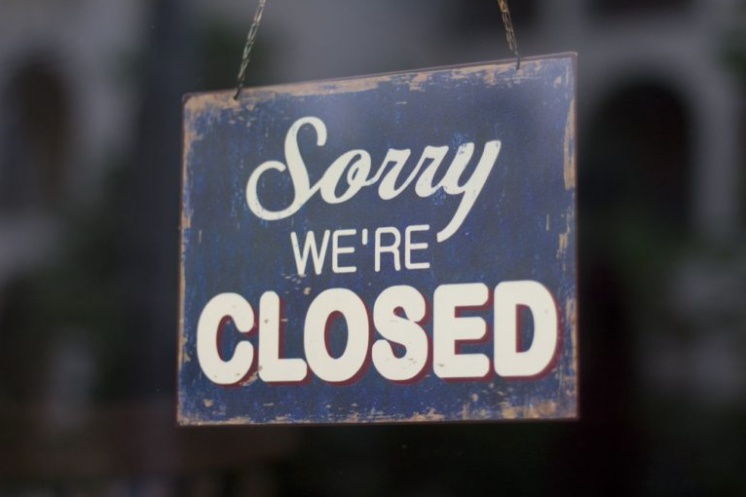The myths around failure of entrepreneurs in SA
January 14, 2019
As someone who strongly advocates for a view of seeing entrepreneurship as a tool for economic growth and development, arguing that embellishing entrepreneurship is a problem may, on the face of it, seem a little deceitful.
But I believe South Africa has developed a culture around entrepreneurship that is, in a sense, “false advertising”. The warning label is missing.
It is widely accepted that 96% of new businesses fail and surrender after a few months due to inexperience and lack of guidance. That is astounding statistic and not one that can be easily glossed over.
How many kids would enlist in the army if you told them only four out of 100 would come back alive?
I believe prospective entrepreneurs should know what the real risks are when starting a business.
If, as the government, you view entrepreneurship as the “medicine” to treat high unemployment, slow economic growth and a lack of wealth creation, surely it should come with a warning label like any other “medicine”?
Such a warning might read: “Starting your own business will likely lead to loss of money, family, friends, fun and confidence.” And it should most probably also state that there is only a 4% chance of the “medicine” working!
First, let us unpack the concept of failure as it relates to entrepreneurship. We need to define whether we’re talking about the failure of the entrepreneur or the failure of the business. Unfortunately, the general view is that, if an endeavour we have started shuts down and ceases to be, we have failed.
While it’s true that businesses do fail, it is also true that entrepreneurs can come back and try again.
Entrepreneurs who come back and try again cannot be deemed to be failures. Remember, provided an entrepreneur makes use of the lessons learnt, the networks created and the skills acquired during a failed business venture, his second attempt will have a much higher likelihood of success.
But, when entrepreneurs try and fail and do not try again, that — to me — is the worst outcome. All that effort, money and time become fruitless and wasted.
In my view, the real indicator to watch here is not the failure rate of businesses. But, it should be the re-entry rate of entrepreneurs post the failure of a business.
As research indicates, that compared various countries’ entrepreneurial re-entry rates.
In SA the rate was slightly more than one times, while in the US it was in the region of three-and-a-half times. This means that the average South African “entrepreneur” tries entrepreneurship only once and then stops trying, and the average American tries again at least two-and-a-half times after the first failure.
Culture and character are two noticeable largest contributors to SA’s low entrepreneurial re-entry rate.
There is a widely known fable of the young American entrepreneur who goes to a would-be investor for money. The investor asks the entrepreneur how many times he has failed. To which the entrepreneur replies: “Never, sir”. The investor responds: “Son, go and fail three times and then come back to me”.
The South African version of the same story has the entrepreneur going to the investor to raise money. The investor asks: “How many times have you failed?” The entrepreneur responds that he has failed three times, to which the investor says, “Thank you for calling on me. We’ll be in touch.” And that marks the end of it.
In a culture that failure in entrepreneurship is a shame, in a banking environment that structurally impedes entrepreneurs with prior failures to raise funding, in a community environment where failure is frowned upon and where negative gossip prevails, it is no wonder we have such a low re-entry rate hence high entrepreneurship failure rate.
Tenderpreneurs Illusion
Some writers also state that: “Let’s also not forget the incredibly destructive myth that a good business plan accompanied by a good dose of funding (and, in South Africa, preferably grant funding) is the panacea to creating a vibrant start-up economy”.
It’s how appears the term “Tenderpreneurs” in South Africa, the two-minute noodle “entrepreneur.
The evidence does not support this delusion.
Two-minute noodle “entrepreneurs” who have “failed” after becoming “Tenderpreneurs” are far less likely to start another business.
When one sees entrepreneurs as two-minute noodles that can be processed on a weekend course, to transform them from unemployed youth on Friday to start-up entrepreneurs on Monday, it should come as no surprise that there is little evidence of success and, more importantly, no understanding of the deep damage to the entrepreneur’s self-confidence that this can create.
SA Government tend to believe in addressing the past economic racial imbalances in a “quick fix” approach by giving tenders to black people inexperienced and/or low level of education, in general.
Early-stage entrepreneurial activity is a lot higher in emerging countries
We also need to realise not everyone is an entrepreneur right now, and not everyone is an entrepreneur by choice. The Global Entrepreneurship Monitor (GEM) monitors the total early-stage entrepreneurial activity (TEA) rate, in first-world and emerging populations. Low TEA rates of 1%-2% of the population characterize generally First World countries . Emerging economies tend to have a much larger TEA rate of 5%-20%.
This type of economy is likely to have a disproportionate number of “necessity entrepreneurs” who, if given the opportunity for formal employment, would take it in a heartbeat.
The experience indicates that entrepreneurs are learning in the right conditions and life circumstances. The government’s role is to create
- an environment of opportunities,
- a tolerance of risk,
- a culture
that allows the entrepreneurial development of those with the right life circumstances, those with the ability to take risks, those with the ability to withstand pain, and those who believe they can muster the necessary resources.
You cannot create entrepreneurs in a weekend course, as so many are trying to do.
The saddest side-effect of glamorising entrepreneurship
When we lead people to believe funding and a good business plan or a weekend course will induce to quick success, we don’t prepare them for the reality of the journey: hard work, ups and downs, and perseverance.
By destroying confidence, we are destroying capital. We must stop spreading the false mythology that business plans and funding are the medicine to success.
Other interesting articles related to entrepreneurs failure in South Africa :
Why is there such a spectacular failure rate in the SMME sector?
4 graphs that show why it’s so tough to be an entrepreneur in South Africa
Bheki Khathi of Ideasvoice SA



